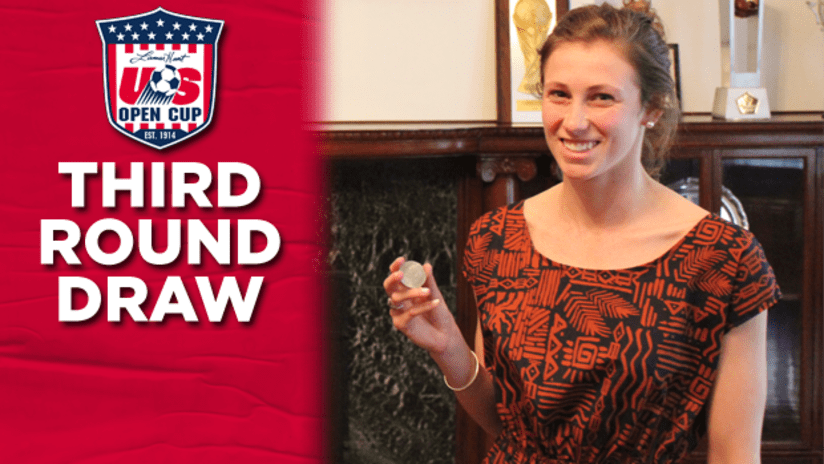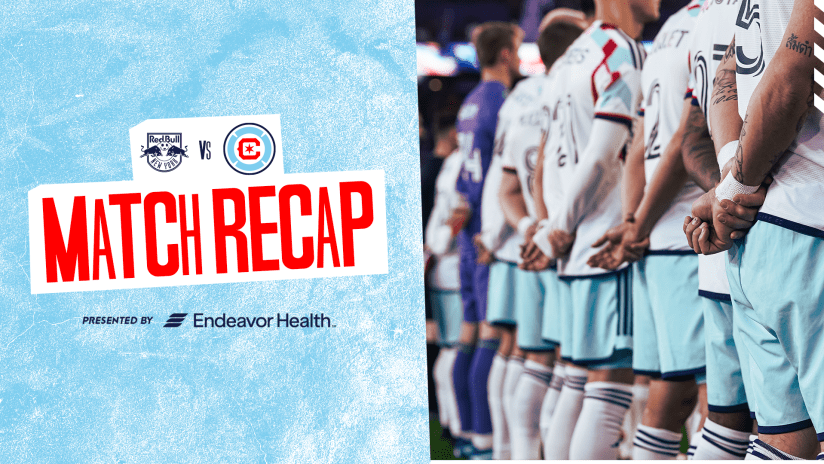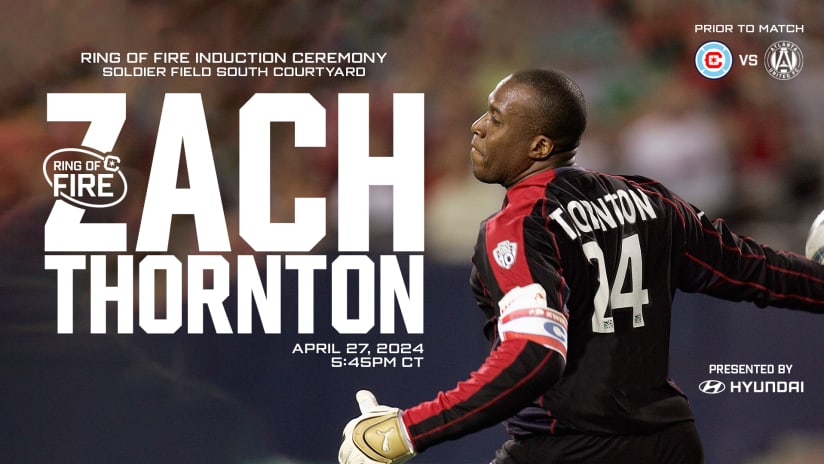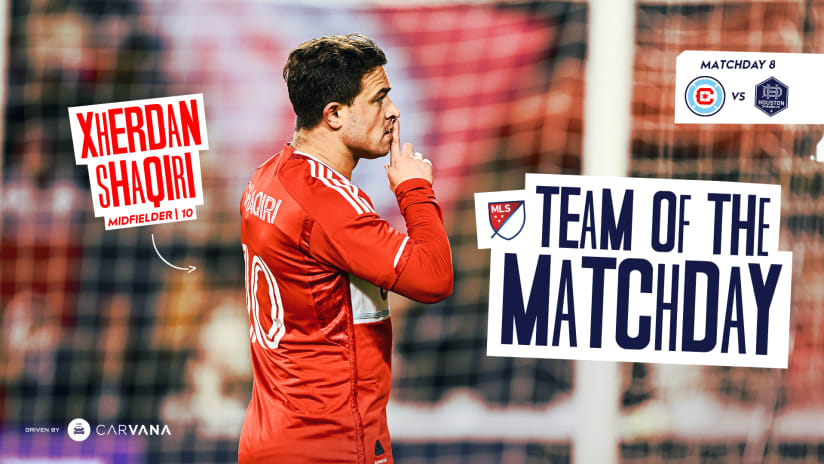CHICAGO, Ill. -- I’m a self-admitted soccer nerd and thus, I love numbers and competition draws. This dates back to my memory of being up at 3am one Saturday morning in December 2001 to watch the U.S. Men’s National Team’s World Cup fate for the 2002 FIFA World Cup determined.
So when the U.S. Soccer Federation asked me Tuesday if I’d be interested in serving as an observer for their third round Lamar Hunt U.S. Open Cup draw, I jumped at the opportunity.
Like many, I was somewhat skeptical as to how fair the draw was. The theorist in me pictured some U.S. Soccer Federation bureaucrats sitting in a smoke-filled room figuring out who they wanted to play each other in a similar fashion to the way Harry Truman was chosen as Franklin D. Roosevelt's Vice President in 1944.
Because they don't broadcast it, what other assumption is one to make?
And yes, as we know, it’s not truly random. Lots of leg work is done in advance to keep as many matchups as possible geographically convenient for the teams. As you'll see though, it simply isn't possible to accommodate everyone.
READ: FULL THIRD ROUND U.S. OPEN CUP DRAW
Still, there are slips of paper, envelopes and one bicentennial silver dollar that decide it all and while it doesn’t carry the pomp and circumstance of the World Cup or FA Cup draws, it is still exciting to witness, even if I was the only spectator watching Open Cup Commissioner Paul Marstaller (who's been in charge of the tournament since 2001) and his assistant Amy Prestinario carry it all out.
With that, I’ll do my best to describe how it all unfolded…
As I arrived at Soccer House, Marstaller handed me a sheet of the potential regional matchups.
Some were very clear, for instance the winners of the Dayton Dutch Lions (USL-Pro) /Dearborn Stars SC (USASA) match and Rochester Rhinos (USL-Pro) / GPS Portland Phoenix (USL PDL) were already set to face the Columbus Crew and New England Revolution respectively. Just a coin flip (see the first of many below) was needed to decide who the hosts would be.
In the case of a hosting coin flip, the lower league teams are assigned with heads and the MLS team is assigned with tails. As Dayton’s home venue was deemed not to meet the tournament's minimum standards and Dearborn SC didn’t apply to host, Columbus automatically won the hosting rights.
In New England’s case, the coin came up heads for the lower-league side BUT GPS Portland Phoenix also didn’t apply to host so should the PDL side upset the Rhinos, New England would host in that scenario.
Further down there was a breakdown of potential Mid-Atlantic matchups broken into two distinctions…
This is where things began to get interesting as the Philadelphia Union were barred from being paired with the Harrisburg City Islanders (USL-Pro) / Reading United (USL PDL) winner. This is not because of their in-state affiliations with the two clubs but because Union assistant coach Brendan Burke is also the head coach of Reading United.
Because of that, there was a coin flip between the New York Red Bulls and D.C. United to see who would be paired with that match up. Red Bull won and also won the subsequent flip to host either team.
D.C was then moved down to the next grouping where the Union were placed along with Pittsburgh Riverhounds/Ocean City Nor’easters and Richmond Kickers/Icon FC.
A coin flip was done to determine which MLS team would be paired with which lower-league matchup (Philly was paired with Pittsburgh/Ocean City, D.C. with Richmond/Icon FC). Further flips were done to determine hosting with the winners of both lower-league matchups winning the right to host against the MLS sides.
Then we came to two separate geographic groups with one lower-league matchup each. The Fire were included with Sporting KC in the decision on who would play against the winner of Minnesota United FC (NASL) - Des Moines Menace (USL PDL) / Madison 56ers (NPSL; Des Moines hosts Madison Wednesday night) while the LA Galaxy and Chivas USA were paired with USL-Pro’s LA Blues and the PDL’s Ventura County Fusion.
Like the Mid-Atlantic example, in both of these cases, there is a coin flip to determine the MLS team that will stay in that geographic region. Sporting KC and Chivas USA won those flips and the Fire and Galaxy were then moved to what I would describe as a Wild Card group (we’ll get to that later).
A coin flip was done to determine who would host the Midwest matchup, with Sporting KC winning. Interestingly, Chivas USA was the only MLS club that didn’t submit an application to host and so the rights for that game default to the winner of the LA Blues/Ventura County matchup.
Then we headed a group made of teams mostly from the state of Texas.
This group featured the two Lonestar MLS teams (Houston Dynamo and FC Dallas) along with three lower league matchups: Wilmington Hammerheads (USL-Pro) / Austin Aztex (USL PDL), Ft. Lauderdale Strikers (NASL) / Laredo Heat (USL PDL) and San Antonio Scorpions (NASL) / FC Tucson (USL PDL).
In order to determine which of the lower league sides would fall to the wild card grouping, Marstaller lettered the match ups (alphabetically according to the second round host team). He then brought out three envelopes each containing a slip of paper numbered 1-3. Whichever matchup ended up being drawn third would fall to the wild card group and that ended up being Wilmington/Austin.
With that set, coin flips were done to first determine which MLS team would be paired against which lower-league match. FC Dallas was partnered with Ft. Lauderdale/Laredo while Houston was drawn against San Antonio/Tucson.
Coin flips were then done to determine the hosting of those games with both MLS teams losing. Though like Chivas USA, because FC Tucson did not apply to host, Houston would then welcome the PDL side to the Bayou City should they pull a second round upset.
The Wild Card Group now complete with the addition of the Chicago Fire, LA Galaxy and Wilmington/Austin matchup, Marstaller then turned back to his envelopes.
It is worth noting that throughout the process, he asked me as the witness to confirm that the envelopes all had a different letter or number in them and that they were properly shuffled. In each case I confirmed this to be true.
He went down the list and first lettered each lower-league matchup and MLS team from A-G in the order they were printed (again alphabetical according to the host of the second round matchup) with Wilmington/Austin included at the very bottom on their side and the Chicago Fire and Los Angeles Galaxy going at the end on the MLS side.
Then after shuffling the numbered envelopes, they were randomly pulled going down the list to give the lower league sides a numerical assignment. This is important because it is the order the matchups are drawn in.
This is how the numbering and lettering went:
<u><strong>Second Round Matchup</strong></u> |
<u><strong>MLS Team</strong></u> |
5 A - Atlanta Silverbacks/Georgia Revolution |
A - Colorado Rapids |
4 B - Carolina Railhawls/Carolina Dynamo |
B - Portland Timbers |
7 C - Charleston Battery/Portland Timbers U-23 |
C - Real Salt Lake |
6 D - Charlotte Eagles/Seattle Sounders U-23 |
D - San Jose Earthquakes |
2 E - Orlando City/Ocala Stampede |
E - Seattle Sounders FC |
1 F - Tampa Bay Rowdies/VSI Tampa Bay |
F - Chicago Fire |
3 G - Wilmington Hammerheads/Austin Aztex |
G - LA Galaxy |
The numbers then went back into their envelopes and were reshuffled.
From there, Marstaller just went down the list, with the only possible hiccup being Portland or Seattle being drawn against their PDL teams which is against the U.S. Open Cup bylaws until the final. Would that have happened, they would have defaulted to the next matchup (luckily for him, it didn’t occur).
If you look at what the third round pairings ended up being, you can see the order in which the drawing occurred. Once all MLS teams were assigned a third round pairing, coin flips were then done to determine host sites.
In the case of the Fire, the club lost the coin flip but could still be playing at home as Seattle Sounders U-23 didn't apply to host. Should they beat Charlotte next Tuesday, the Fire will host Seattle's PDL side at Toyota Park on Tuesday, May 28.
And that was that.
My Impressions: It certainly isn’t a perfect system but it’s the best one that works given where we are in terms of club soccer in this country. Beyond that, it was truly an honor to witness the entire process. It is mostly random and though some would imagine it isn’t above board, the whole vision of a smoke-filled room and shady dealings is just that.
A coin is literally flipped for the right to host every matchup and while it’s a menial task, that in itself was refreshing to see.
Lastly, thanks to thank Paul Marstaller and Amy Prestinario for allowing me to observe and write about the process.
To see the full breakdown of third round U.S. Open Cup matches, click here.





